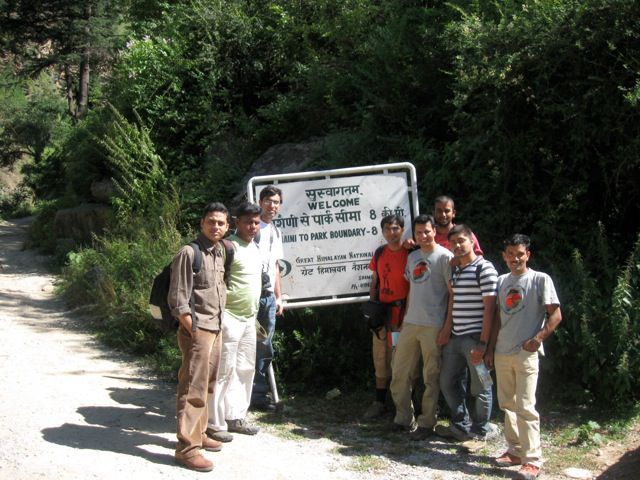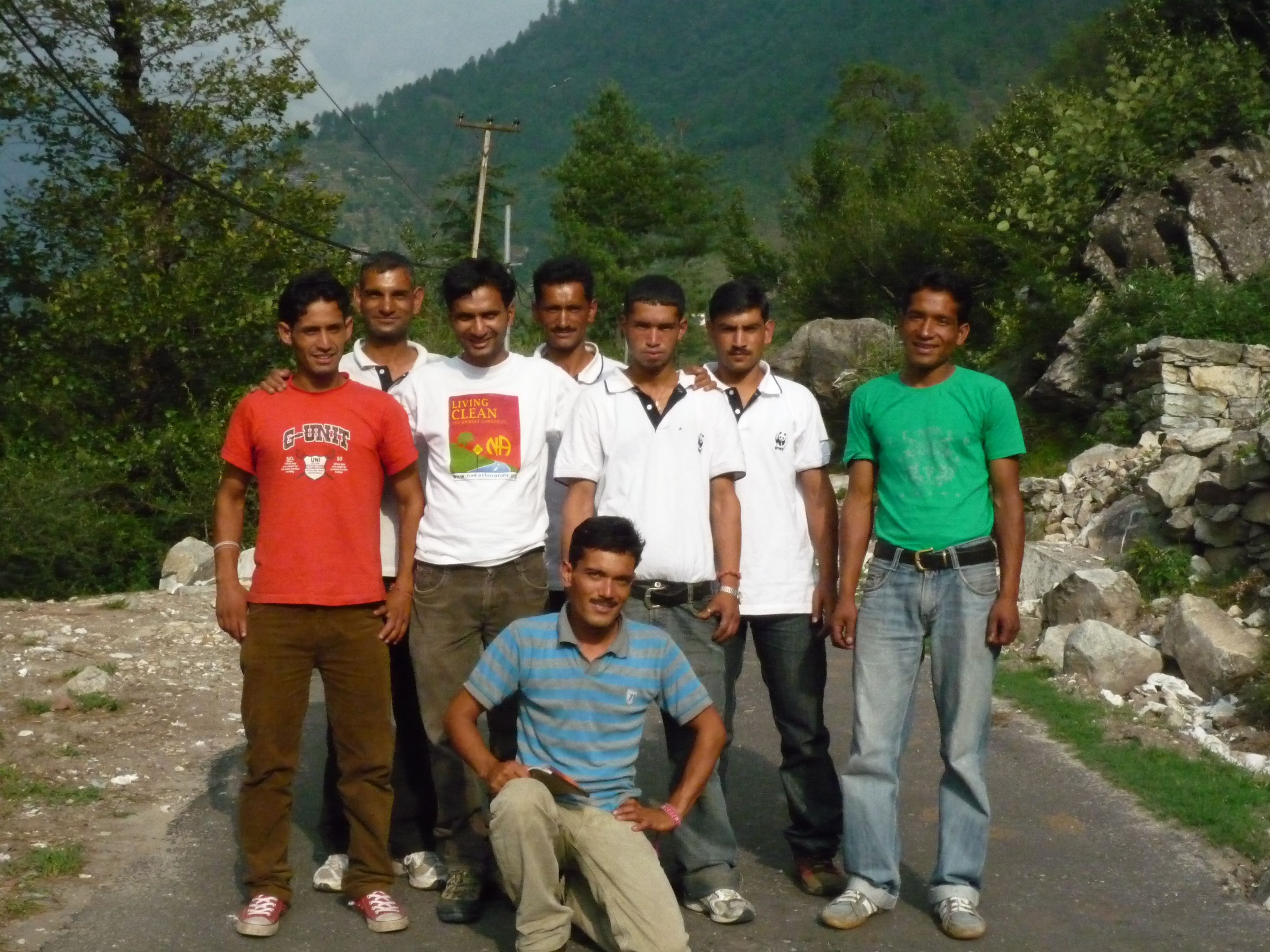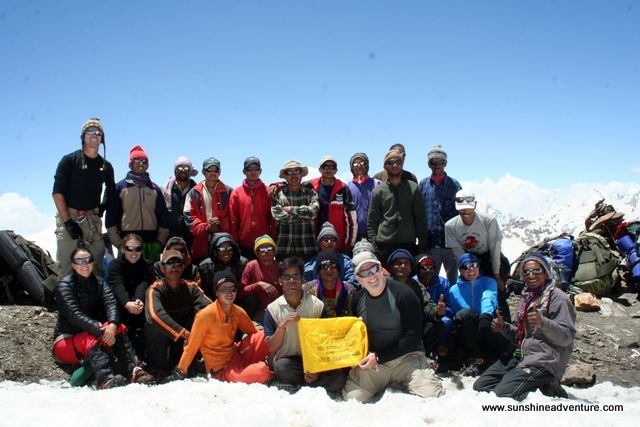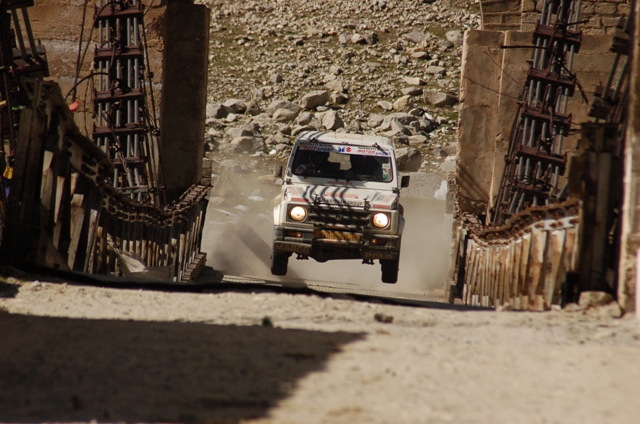
At present, the Great Himalayan National Park (GHNP) comprises 750 sq km. It is naturally protected on the northern, eastern, and southern boundaries by areas under permanent snow or by impassable ridges. In addition, there are two wildlife sanctuaries adjacent to the Park: Sainj (90 sq.km.) and Tirthan (61 sq.km.). The total area under the National Park administration is 1,171 sq. km. The western boundary of the Park has historically supported communities that have had economic dependence on the designated area of the Park. Realizing the environmental pressures these villages would exert on the Park’s biodiversity, an area of over 250 square kilometers was set up as buffer zone. This Ecozone contains 160 small villages with a population of about 19,000 people. Almost 90% of the Ecozone is forest habitat which, when properly managed is leading to income generation of the locals without harming the environment. One such initiative is the community based ecotourism being practiced in the GHNP.
Community Based Ecotourism – Lessons 2005-2010
GHNP is also one of the major sites for studying community based ecotourism enterprise in the Western Himalayas. For over five years a private ecotourism company styled Sunshine Himalayan Adventures have been advocating and practicing ecotourism initiative along with a local NGO called BTCA (Society for Biodiversity Tourism & Community advancement). This initiative has increased awareness about the park and specifically ecotourism among ecozone residents themselves or those living near the zone providing balance in educating these important stakeholders realizing that the local community is going to be providing tourism services.

We also work with the park authorities in matters like poaching, wildlife monitoring and improving roads and trails or other infrastructure , though realizing its a horse vs. cart problem: tourists must begin coming before they can express demand for better access and infrastructure. In my experience (unless a carefully designed large capital improvement program is initiated with national or international funding) this process will only slowly unfold, with more and more low- to medium-end tourists and activities eventually proving there is a demand for higher end activities and the infrastructure to support them. The process will go faster if there is effective communication between the park and regional stakeholders who influence capital budget decisions (especially for roads leading to the park).
Sunshine Himalayan Adventures realize that privatization (the role of private enterprise) is a complicated one and sometimes controversial means of stimulating and managing ecotourism in protected areas and buffer zones. In my experience the most successful examples are when there are mutually beneficial partnerships developed between private investors and community members and the relationships are supervised by an NGO to assure that neither partner takes advantage of the other. Since the protected area is generally providing the physical tourist attractions, the park must also be directly involved to assure that commercialization does not damage those resources.
NEED FOR AN ECOTOURISM AUTORITY
We have realized that at least in early stages these private/community partnerships will need protection from independent unsupervised operators such as low-qualified guides or food and accommodation services which do not favor local community members as labor. We are trying to develop an Ecotourism Authority where the “authority†of this enterprise has to be clear to prevent such independent operators from entering the market. In later stages the Authority may act to establish standards for independent tour operators, guides and other service providers in order to maintain a certain level of service.
This establishment of an Ecotourism Society (better called Ecotourism Authority) with real decision-making authority and the ability to shorten implementation time and will be carefully designed with input from all the relevant stakeholders, including the Private operators such as Sunshine Himalayan Adventures , BTCA and the newly-formed tourism and home stay operators association called STDA( Seraj Tourism Development Association).
One is aware that it will be a huge challenge to avoid pressures to allow or even encourage large scale commercial tourism development especially in the ecozone. But there are dozens of examples in the world and even close by in northern India, (Corbett National Park, Ranthambore National Park) where such commercialization has failed to be a wise long term strategy because 1) it does not continue to be profitable; 2) it destroys the attractiveness of the area which prompted its commercialization; and 3) it loses essential support because it has betrayed original commitments to bring long term benefits to local communities.
Guided by zeal to create new models of ecotourism SHA & BTCA have a unique and exclusive relationship under the guidance of the park management. Our activities include promoting visits of friends from foreign lands to create a better understanding of the Western Himalayas, its people, religions and culture. The ecotourism program continues developing a paradigm wherein local villagers actually benefit from having their ancestral lands turned into a wilderness preserve. Our regular trainings with the local youths in various spheres of eco-tourism and trekking is empowering them to keep the wild nature preserved for posterity. This plan of simple elegance and sweeping implications requires patience and support, not only from the Government but civil society at large.
Ankit Sood is Associate Professor at Govt. PG Degree College Kullu. He also runs Sunshine Himalayan Adventures.




Thanks Ankit for sharing such valueable information. Will look forward for more such infromation from you.
Thanks for your dedication to conservation and environmental awareness of the park, Ankit. Your contribution to the ecotourist industry of the park is invaluable and I appreciate your efforts to include ecological monitoring in your mission. I look forward to continuing to read and hear about your work.
Thanks Ankit – for a wonderful write-up about this wonderful place…!